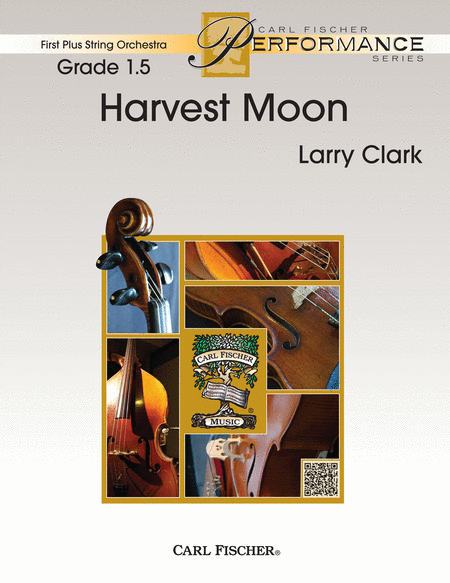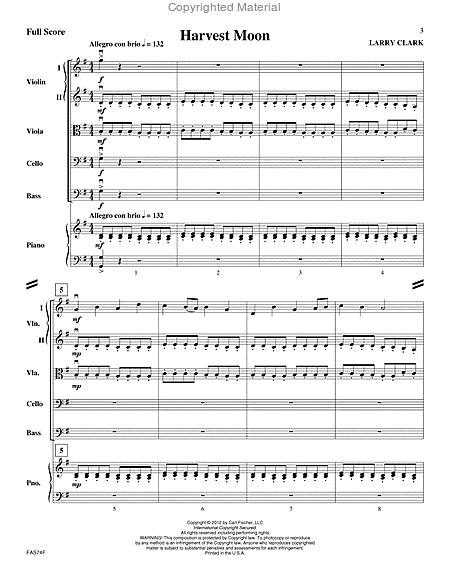Harvest Moon
-
Ships in 1 to 2 weeks
Details
Description
SKU: CF.FAS74
Composed by Larry Clark. SWS FS. First-Plus String Orchestra (FAS). Set of Score and Parts. With Standard notation. 16+16+10+4+10+5+4+12 pages. Carl Fischer Music #FAS74. Published by Carl Fischer Music (CF.FAS74).ISBN 9780825888991. UPC: 798408088996. 8.5 x 11 inches. Key: G major.
Larry Clark returns to the popular style and sound of an earlier favorite, Crystal Moon, and gives us Harvest Moon, written for an easier level. This piece has the trademarks that Larry has has become known for: great melodies, fresh harmonies, interesting rhythms and an abundance of musical flavor. The delightful spiccato style of writing will help you to teach this important bowing technique to your students. Another exceptional work from Larry Clark!.
I wrote a piece a few years ago called Crystal Moon. I guess you could say this is a follow-up to that popular work, but is probably a notch easier to play. Like Crystal Moon, the piece uses a light spiccato style and tuneful melody to depict, in sound, the harvest moon.Harvest moons are closest to the autumnal equinox and seem to be bigger, brighter and/or more colorful than other full moons. The warm color is caused by light from the moon passing through a greater amount of atmospheric particles than when the moon is overhead. While the atmosphere scatters the bluish component of moonlight, the reddish component of the light travels a straighter path to the observer, creating an ethereal effect.The piece begins with light spiccato accompaniment figures as an introduction that sets the mood for the piece, followed by the first statement of the main theme in the first violins. The main theme is then played twice more: once with the addition of a pizzicato bass line, and then with the melody harmonized and a counter line in the celli. The piece moves into the B section, which has even more lilt to it than the main theme. After several different versions of interplay the A theme returns, lead by the celli and a much more lush accompanying harmony. A sudden shift to a C section occurs, strong with thick open fifths in the lower strings.It develops and leads to a build in tension that is finally released by a climatic return of the main theme in a lush and majestic type of treatment. This is followed by a short coda that isbased on both the B and C materials to close the piece.It has been my pleasure to have the opportunity to write this piece. I hope you and your studentsenjoy it and find it useful for your program.-LARRY CLARKLakeland, FL 2012.


 Share
Share